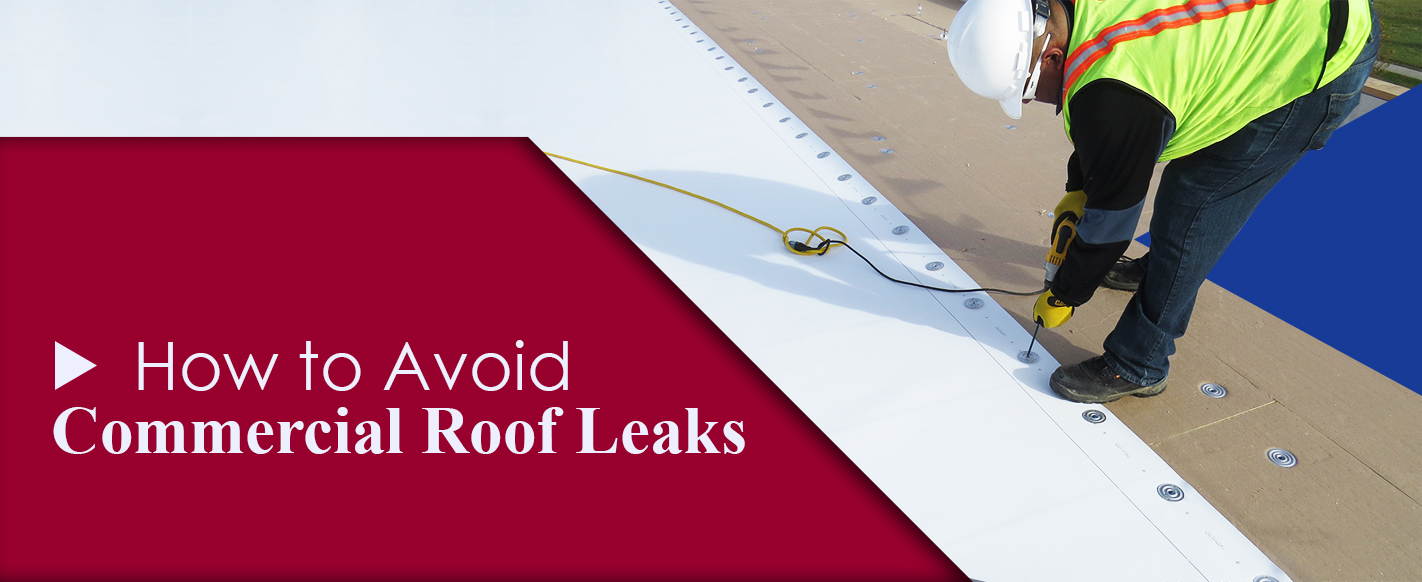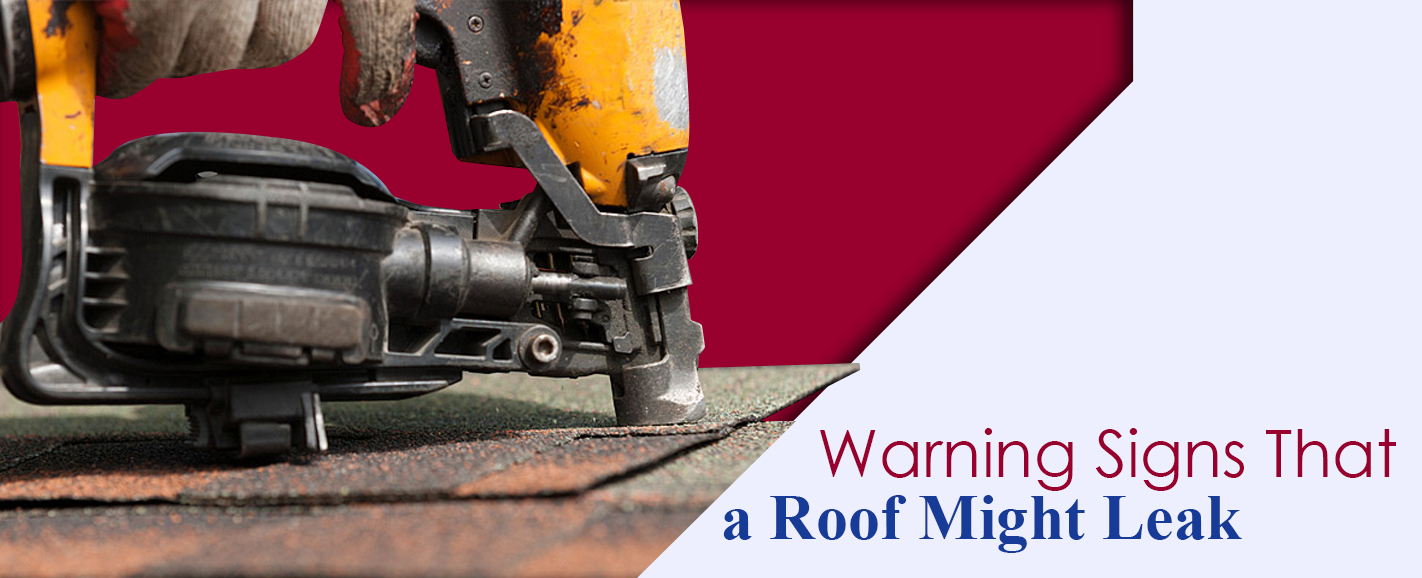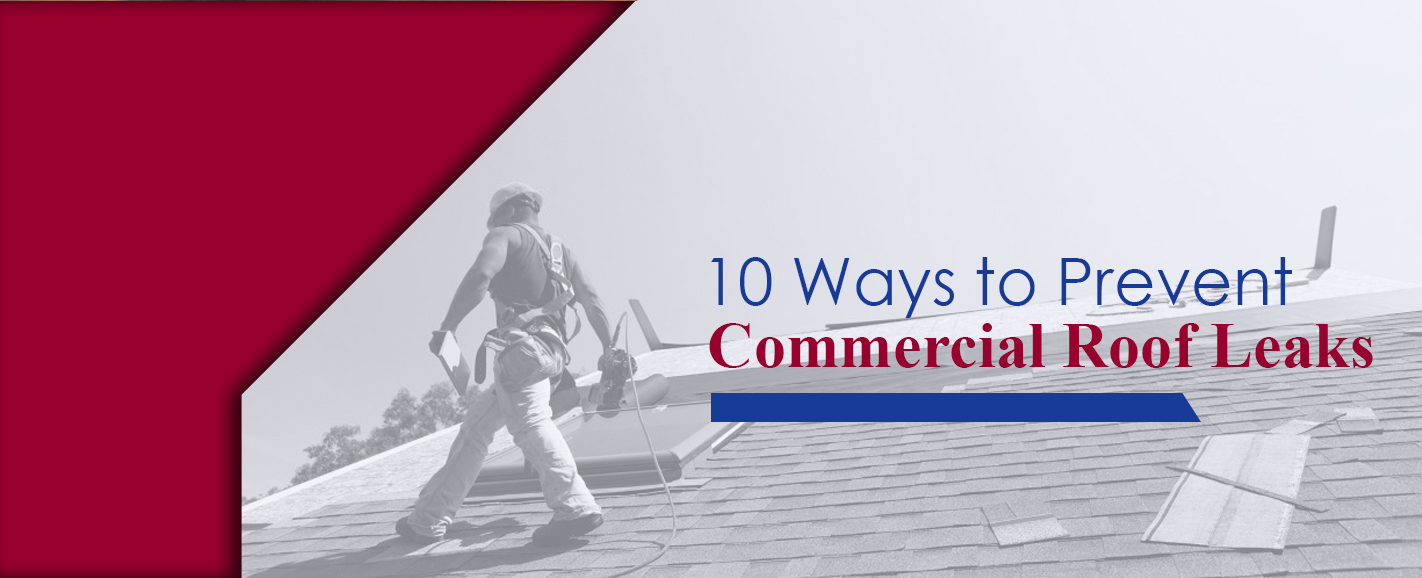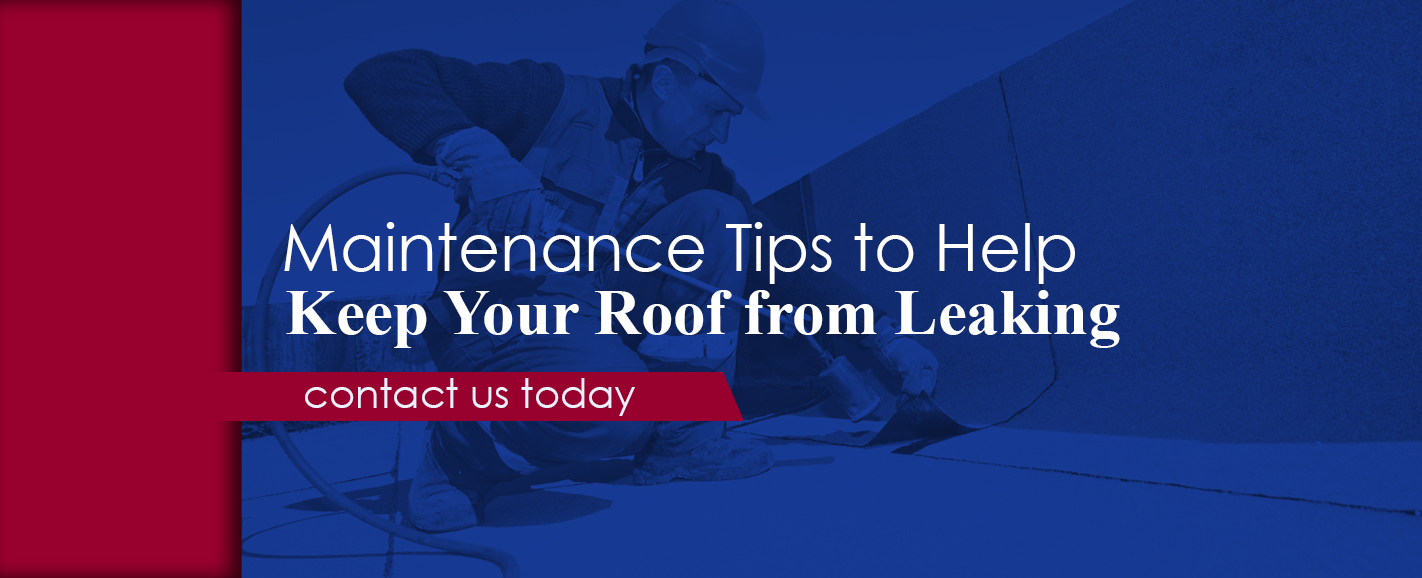Table of Contents
- What Causes Commercial Roof Leaks
- Warning Signs That a Roof Might Leak
- 10 Ways to Prevent Commercial Roof Leaks
- Maintenance Tips to Help Keep Your Roof from Leaking
- Contact David Maines for Commercial Roof Repair or Replacement
A rainy spring season or winter with heavy snowfall can significantly increase the risk of commercial roof leaks. In a region like Central Pennsylvania, your roof may experience additional stress that comes with large temperature changes between seasons. Even a high-quality commercial roof requires regular maintenance and inspection to prevent leaks and keep it performing at its highest potential all year long. To avoid costly repairs from commercial roof leaks, learn more about why roof leaks may happen, and follow these tips to lessen them.
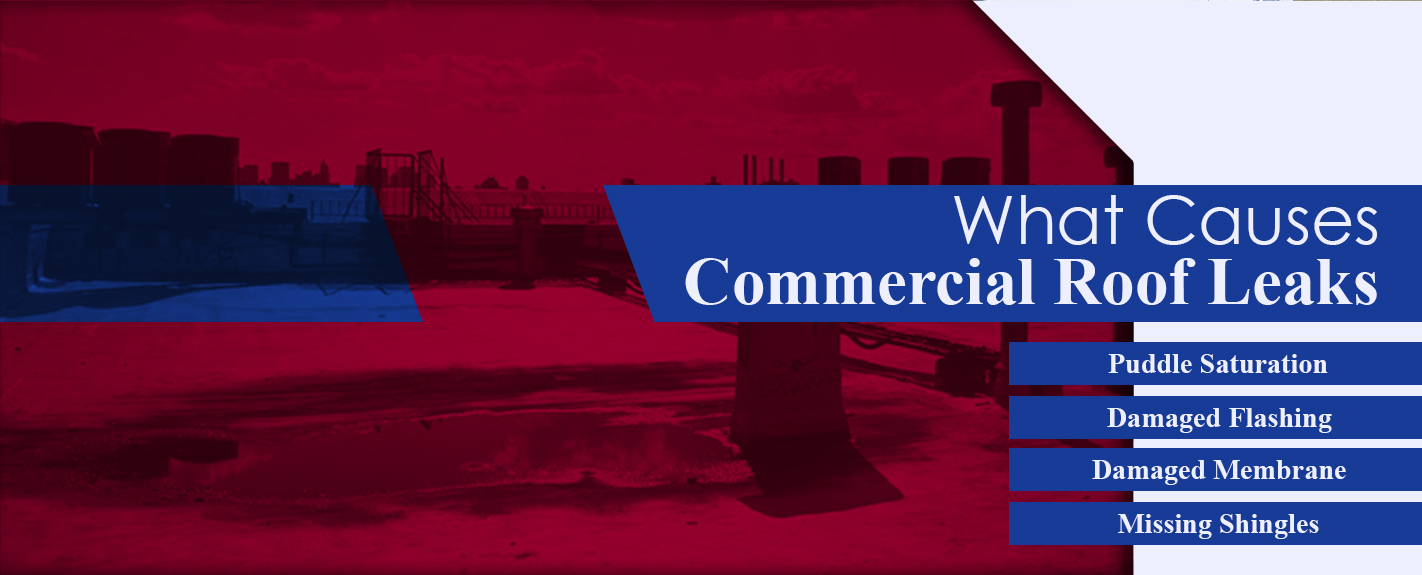
What Causes Commercial Roof Leaks
Many different factors can cause commercial roof leaks, and each roof presents unique strengths and weak points. However, several common problems can occur with commercial roofing systems and lead to leaks. Knowing the causes of roof leaks can help you take proactive action to avoid commercial roof leaks and repair weak spots early. Below are some of the primary causes of commercial roof leaks:
Puddle Saturation
Many commercial rooftops are flat surfaces that require drainage systems to prevent the collection of water. While some puddling is natural after a large storm or heavy rainfall, puddles that persist for a few days may indicate a problem with the roof’s drainage system. The accumulation of water on a flat commercial roof can cause saturated soft spots that lead to leaks. Pooling water can also put stress on a roof as each square foot of puddled water adds about five pounds of weight per square inch. Slanted roofs can also experience drainage problems and leaks along the edges of the roof if gutters are not kept clear or downspouts are clogged.
Damaged Flashing
Another common cause of commercial roof leaks is damage to the flashing that seals the roof along the perimeter and seams where roof angles meet. Flashing works as a protective seal against water and debris. However, flashing can be damaged by severe weather or may come loose from heavy winds. Flashing may also naturally weaken or loosen over time as it expands and contracts slightly during hot and cold seasons. Damaged or poorly-fitted flashing may allow water or moisture to seep into the roof.
Damaged Membrane
Commercial roofs are sealed with a barrier that protects the raw roofing material from wind, rain, snow and other natural elements. This outer membrane allows water to slide off of the roof and into the drainage system instead of saturating the roof surface. As the membrane ages and becomes weathered, it may become susceptible to cracks or blisters from debris or harsh weather. Once a crack forms in the outer membrane, it is likely to spread. Rainwater can easily saturate the roof through these cracks.
Poorly Sealed Pipes and Openings
Commercial roofs may have many spots where pipes, drains, HVAC units and other building equipment extend through the roof’s surface. A well-installed roof will have adequate seals around the base of any roof openings. If these seals are weak or become damaged, water can saturate the roofing and may also damage building components. If a roof also has a drainage problem, puddles may form around pipes and other openings, making leaks even more likely. Excessive pooling water could also rise high enough to enter building vents or valves.
Missing Shingles
Harsh weather or damage from debris can cause roof shingles to come loose or fall off. As shingles age, they also become more susceptible to damage. Missing or cracked shingles provide an opening for rainwater to saturate the raw roofing materials underneath. While high-quality commercial roofs with shingles will have additional protections against leaks, rain may still penetrate this barrier and leak through.
Warning Signs That a Roof Might Leak
Knowing the warning signs of a leak can prevent commercial roof leaks and catch existing leaks before they cause more damage. Below are some tell-tale signs that a roof leak has started or may be imminent:
Physical Damage to the Roof
No matter how strong the roof is, physical damage is likely to occur from storms, blizzards, hail and falling debris such as tree branches. Cracks in the roof membrane, missing shingles or damaged flashing are all warning signs that a roof may leak.
Roof Puddling
If puddles form on the roof, this is a sign that your roof’s drainage system is not working properly and the roof may soon leak.
Signs of Age or Weathering
Constant exposure to sun, wind and rain make it inevitable that a roof will experience some decay. After many years, a roof will begin to appear worn, faded and aged. These signs indicate that the roofing materials are not as strong as they used to be, making the roof more likely to leak. Most commercial roofs last for about 20 years, but a roof that is constructed with high-quality materials and given proper maintenance may last even longer. At David Maines, many of our new commercial roofs offer warranties of up to 30 years, and our commercial shingle roofs offer warranties up to 50 years.
Mold or Mildew
If a leak has begun to saturate your roof, you may first notice mold or mildew on the ceiling or walls. Mold also produces a foul odor that can be recognized before visible mold grows. Mold may occur if a small leak goes unnoticed for a long time, allowing moisture to collect in the ceiling or wall.
Water Stains on the Ceiling or Walls
As water from rain or puddles makes its way through the roof, it will stain the ceiling or walls at its point of entry. Even if the leak is only minor at this point, you can identify it by water stains or streaks on the ceiling or upper edge of the wall. Water stains are an excellent warning that a roof leak should be repaired before it becomes more serious.
Puddling Water Indoors
Once a leak has penetrated the ceiling or wall, water puddles may occur inside your business. Puddles are a sign that the leak has become serious and may continue to spread if water has collected inside the roof.
10 Ways to Prevent Commercial Roof Leaks
The easiest and most effective way to avoid roof leaks in a commercial building is to routinely inspect the roof for signs of damage and potential weak spots. By monitoring the condition of your roof and quickly addressing any problems that arise, you will save significant costs and avoid larger, more expensive repairs in the future. Performing effective roof maintenance will increase the longevity of your roof and prevent leaks.
1) Remove Debris
Debris that falls onto a roof can cause cracks to occur in already aged or weathered roofs. Newer roofs can also be damaged by debris if it collects pools of water or gathers moisture that causes mold or mildew. On flat commercial roofs, debris like leaves, branches, dirt and gravel can quickly collect if the roof is not kept clean.
2) Keep Drains Clear
Puddle saturation is one of the most common causes of roof leaks, so prevent water from pooling by keeping the drains, gutters and downspouts of your roof entirely clear of debris. Clearing your drainage system should be part of your regular building maintenance, especially in fall when leaves are prone to collect in gutters and downspouts. Water damage from leaks or roof pooling can be costly, so it is worth the time to clear drains every few months.
3) Trim Back Overhanging Branches
Trees that grow over the roof of your building are likely to drop leaves that contribute to clogging drains and gutters. In storms or windy weather, tree branches may also fall onto the roof, causing more serious damage. Trees that drop natural debris, such as walnuts or acorns, may also cause punctures to the roof membrane. Cut back any branches that hang over the roof to prevent physical roof damage or drainage problems that may lead to leaks.
4) Perform Regular Inspections
Many roof repair emergencies such as structural damage or severe leaks could likely be prevented by regular roof inspections. When potential weaknesses are recognized early, you can repair them before they become an expensive problem. This preventative maintenance can increase the longevity of your roof as well as reduce the need for repairs in the future.
5) Inspect the Perimeter
When inspecting your roof, examine the edge of the roof to make sure the flashing is properly fitted and sealed. Look for any tears, punctures or gaps where moisture could leak in. Take note of mold, soft spots or other evidence of water damage.
6) Inspect the Roof Surface
Methodically inspect the entire surface of the roof for any physical damage. For commercial roofs with shingles, note any missing or damaged shingles. For flat commercial roofs with rubber, look for cracks in the outer membrane or along roof seams. Built-up roofs may have areas of missing gravel that could be susceptible to leaks.
7) Inspect Roof Openings and Pipes
Check the seals around all roof penetrations as they are particularly susceptible to water leakage. If seals are cracked or peeling, have them repaired as soon as possible.
8) Inspect and Replace Caulking
Commercial roofs are sealed with caulking or another strong roof sealant that is designed to protect your roof against leaks and other damage. But over time, caulking can deteriorate, leading to cracks or openings where water can enter. Pay particular attention to sealant along roof penetrations and flashing. Replacing roof sealant is an affordable roof repair that should be done as soon as problems are identified.
9) Address Problems Proactively
Record any potential problems you observed when inspecting the roof and contact a professional to assess the risk. Even seemingly small problems may lead to serious leaks if not repaired early. Instead of waiting for a serious problem to develop, address concerns immediately.
10) Schedule Regular Roof Maintenance
Regular roof maintenance is one of the most effective ways to avoid commercial roof leaks. If your budget allows, schedule regular professional roof maintenance that includes a complete roof inspection and repairs to small problems. The small investment will save money down the road as it increases the lifespan of your commercial roof and reduces the chance of more costly roof repairs.
Maintenance Tips to Help Keep Your Roof from Leaking
Inspecting the condition of your roof should be part of your regular building maintenance. At minimum, a commercial roof should be inspected twice a year — in the fall and spring. Performing a fall inspection ensures your roof is in good condition to face the harsh weather of winter. If there are problems, you will have time to repair your roof before the first snowfall. After winter has ended, a spring roof inspection can identify any damage that was done by snow, hail or ice. Damage that occurred during winter months should be repaired before heavy spring rains occur. Below are some other maintenance tips to avoid commercial roof leaks:
Inspect Your Roof After Storms
In addition to fall and spring roof inspections, you should inspect your roof following any significant storms such as extreme thunderstorms, hurricanes, tornadoes, blizzards or hail. Severe weather events may damage roof components, clog drainage systems or lead to puddling. Even long periods of heavy rain can pose a threat of roof leaks, so pay particular attention to the condition of your roof after harsh weather.
Clear Debris Regularly and After Bad Weather
Always keep your roof and gutters clear of debris. Even damp leaves can gather on your roof and cause mold growth in humid conditions. Debris that accumulates in gutters and drains poses a serious threat of puddle saturation.
Keep Your Roof Clear of Snow
In regions like Central Pennsylvania that can experience heavy snowfall in winter, roofs are prone to structural damage from the weight of piled snow as well as leaks from snow saturating the roof. Carefully rake excess snow off of your roof after each storm. If temperatures remain below zero, snow may accumulate and stick to the roof, posing a more serious risk of roof weakening. Remove all snow from your roof before periods of extremely cold temperatures.
Perform Repairs as Soon as Possible
Any necessary roof repairs, such as patching cracks in the outer membrane or replacing missing shingles should be done as soon as possible. Postponing roof repairs may cause the problem to become worse before it can be fixed. Generally speaking, it is much more affordable to repair roof damage early rather than replacing your entire roof later on. When performing roof repairs, be sure to choose a trusted professional. Roof repairs that are completed incorrectly may only lead to more damage down the road.
Contact David Maines for Commercial Roof Repair or Replacement
David Maines & Associates, Inc., offers commercial roofing services in Pennsylvania and the surrounding regions. Our professional roof maintenance services focus on keeping your roof in top condition to prevent expensive repairs in the future and extend the lifespan of your roof. Maintenance service from David Maines includes a free inspection of your roof to identify areas where repairs may be needed. We can also provide a free estimate of the cost of repairs based on our thorough inspection. At David Maines, we understand that each commercial roof is different, and the needs of each company are different too. That’s why we always provide a complete and honest inspection report to help you make the right decision for your commercial roof.
If roof repairs are necessary, David Maines offers a variety of commercial roof repair services to fix leaks and improve the strength and durability of your roof. Common commercial roof solutions include repairing drainage systems, replacing old caulking, patching punctures and cracks, repairing roof seams and replacing damaged flashing. Before beginning any repair work, our team will provide an accurate estimate of the cost and time the repair will require.
In some instances, it may be more cost-efficient to replace a commercial roof rather than to repair it. When you need a new commercial roof, David Maines offers fast installation of high-quality commercial roofs from a proven manufacturer. We offer a variety of commercial roofing replacement solutions to suit your company’s unique needs. If you think it is time for a new roof for your business, contact us today to learn more about our commercial roofing solutions.
Contact David Maines for Roofing Repair
Give Us A Call or fill out our contact form!
